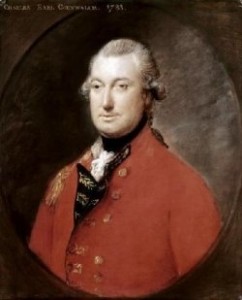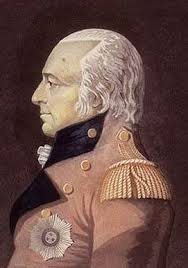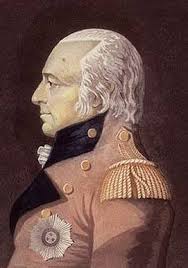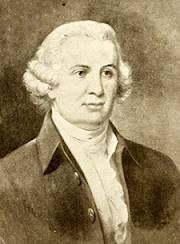 On 19 February 1781, the advance guards of Lord Cornwallis’s army of nearly two thousand soldiers rode into the town of Hillsborough, North Carolina, built near the Eno River. Cornwallis’s occupation of the town continued into the next day. His men had covered a lot of ground on a wintry Carolina campaign and—after Cornwallis had tried to lighten his load by burning the baggage—given chase (in futility) to patriot general Nathanael Greene’s army all the way to the Dan River. British uniforms were showing wear. Soldiers were tired and hungry. So the stay in Hillsborough was to provide R&R for the men and refurbish the army.
On 19 February 1781, the advance guards of Lord Cornwallis’s army of nearly two thousand soldiers rode into the town of Hillsborough, North Carolina, built near the Eno River. Cornwallis’s occupation of the town continued into the next day. His men had covered a lot of ground on a wintry Carolina campaign and—after Cornwallis had tried to lighten his load by burning the baggage—given chase (in futility) to patriot general Nathanael Greene’s army all the way to the Dan River. British uniforms were showing wear. Soldiers were tired and hungry. So the stay in Hillsborough was to provide R&R for the men and refurbish the army.
Cornwallis arrived in good spirits. He was under the impression that the North Carolina backcountry, including Hillsborough, was crawling with loyalists who merely awaited his word before they stepped forward proudly to fight for the King. (Regulated for Murder describes the political climate in Hillsborough less than a week before the occupation.) Yes, there were plenty of loyalists in North Carolina. But five years earlier, on 27 February 1776, the cause of the King’s Friends had suffered a paralyzing blow. Scottish Highlanders, fighting on behalf of exiled royal Governor Josiah Martin, were roundly defeated by patriots at Moores Creek Bridge. Patriots then took control of North Carolina. Loyalists had to keep their heads down to survive.
On 20 February 1781, Cornwallis issued a proclamation from Hillsborough. It invited all the disgruntled loyalists to bring their weapons and meet at the royal standard his troops had erected in town, where they would receive instructions about how to subdue the patriots. He said nothing about sticking around to back up the loyalists’ efforts.
Cornwallis pushed just about every button he could on those who were loyal to the King. He asked them to out themselves to enemies, abandon their families to the wrath of patriots, and assume the entire burden of fighting an opponent who was, at the time, better organized. Loyalists recognized that Cornwallis’s proclamation was a bum deal. After they’d suffered at the hands of patriots for years, Cornwallis confirmed their fears that the Crown really didn’t understand the challenges faced by its loyal American subjects. The proclamation disillusioned and angered loyalists, distanced them from the Crown’s efforts.
Legends abound about incidents that occurred during the Hillsborough occupation. One popular legend describes patriot sharpshooters hiding near the Eno River and picking off redcoats who tried to fetch water. But it’s a fact and no legend that Cornwallis didn’t receive the warm welcome he’d expected from Hillsborough’s residents. The clueless general was miffed that there were so few takers on his grand offer. He and his army left Hillsborough on 26 February to chase Nathanael Greene’s ghost. They found him just a few weeks later, at Guilford Courthouse.
 Not all British officers misunderstood the loyalists’ plight and failed to provide them with the support they needed. On the coast, Major James Henry Craig and the 82nd Regiment had occupied the town of Wilmington, North Carolina at the end of January. Throughout most of 1781, the regiment remained in Wilmington. Craig earned the trust of loyalists where Cornwallis had failed. And loyalists flocked to Wilmington to bolster the redcoats’ power, thus turning North Carolina into a huge headache for the Continental Army that year.
Not all British officers misunderstood the loyalists’ plight and failed to provide them with the support they needed. On the coast, Major James Henry Craig and the 82nd Regiment had occupied the town of Wilmington, North Carolina at the end of January. Throughout most of 1781, the regiment remained in Wilmington. Craig earned the trust of loyalists where Cornwallis had failed. And loyalists flocked to Wilmington to bolster the redcoats’ power, thus turning North Carolina into a huge headache for the Continental Army that year.
**********
Did you like what you read? Learn about downloads, discounts, and special offers from Relevant History authors and Suzanne Adair. Subscribe to Suzanne’s free newsletter.


